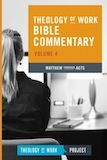The Temple Incident (Mark 11:15-18)
Bible Commentary / Produced by TOW Project.jpg)
The incident where Jesus drives out the vendors and money changers from the temple has mercantile overtones. There is a debate over the precise significance of this action, both in terms of the individual Gospel accounts and in terms of the Historical Jesus tradition.[1] Certainly, Jesus aggressively drives out those who are engaging in trade in the temple courts, whether selling clean animals and birds for sacrifice or exchanging appropriate coinage for temple offerings. It has been suggested that this is a protest over the extortionate rates being charged by those involved in the trade, and thus the abuse of the poor as they come to make offerings.[2] Alternatively, it has been seen as a rejection of the annual half-shekel temple tax.[3] Finally, it has been interpreted as a prophetic sign act, disrupting the processes of the temple as a foreshadowing of its coming destruction.[4]
Assuming we equate the temple to the church in today’s environment, the incident is mostly outside our scope, which is non-church-related work. We can note, though, that the incident does cast a dim light on those would attempt to use the church to secure workplace advantages for themselves. To join or use a church in order to gain a favoured business position is both commercially damaging for the community and spiritually damaging for the individual. By no means do we mean that churches and their members should avoid helping each other become better workers. But if the church becomes a commercial tool, its integrity is damaged and its witness clouded.







